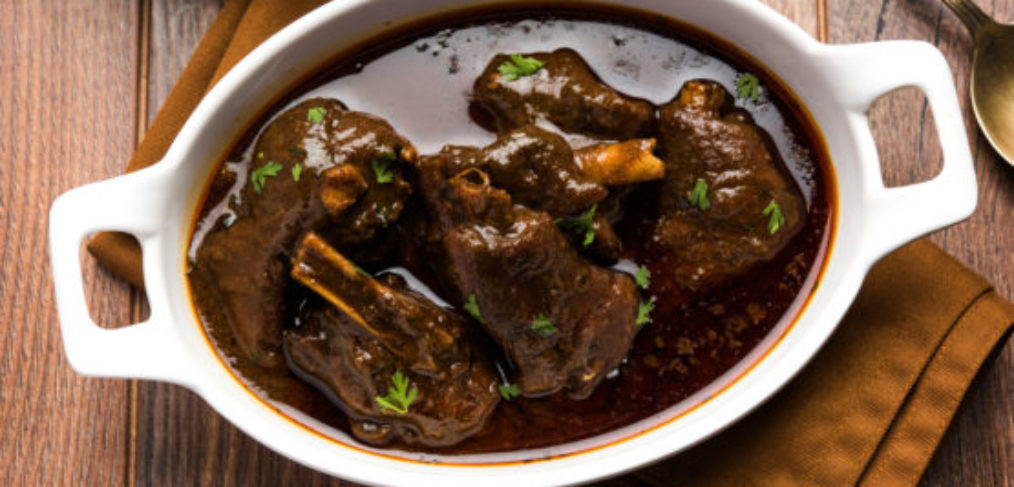It’s Goatober: Get Your Goat On!

Tired of boneless, skinless chicken breast?
Is that egg white scramble getting old?
For many, these two tried and true low-fat protein options, while being a part of a healthy eating protocol, have graced our plates one too many times, leaving us less than thrilled when we think about one more ‘diet’ friendly meal, which all too often is not only low in calories and good fat, but also leaving quite a bit to be desired in the flavor category.
Why not try something new?
If you’ve been testing the waters of an authentic Paleo approach for some time now but have yet to dive into the world of eating what some might refer to as ‘exotic’ meat, there’s no time better than the present to introduce your palate to some new tastes.
Keep in mind that by exotic, I’m not suggesting we source meat which is indigenous to Australia if we live in LA.
Rather, exotic in the sense of new or different, but certainly one which can still be prepared with a theme from far off lands, just without the carbon footprint of sourcing them there.
Why not start by introducing some goat into your repertoire?
I learned just last week that in 2011, the idea to promote the use of meat from male goats on dairy farms during the month of October was created by Patrick Martins, a founder of the online meat and poultry market Heritage Foods. He called it Goatober and by 2016, he had teamed up with a goat meat company in England, and goat meat events were soon held in English cities and are now held across the globe (1).
A 4 oz. cooked serving of goat meat has 124 calories, 2.6 grams of fat and 25 grams of protein. It is lower in fat than chicken and higher in protein than beef. The low levels of saturated fat and cholesterol, combined with its high iron and protein content, make goat meat a good choice for anyone looking for a healthy red meat. It’s a leaner choice when compared to equal serving sizes of chicken, beef and pork (2).
Wondering how incorporating goat into your family’s regime will affect the environment?
Contrary to silly notions that any type of meat consumption, regardless of source and rearing is bad for the planet, eating moderate portions of meat from this ruminant is actually helpful to our environment; goats are often regarding as a valuable part of a sustainable farm.
They fit well into the biological and economic niches in a farm operation that otherwise go untapped. They can be incorporated into existing grazing operations with sheep and cattle. Goats can also be used for control of weeds and brush to help utilize a pasture’s diversity, as long as they are not allowed to overgraze (3).
So what do you do if you, or your neighbor isn’t living on such a sustainable farm where goats happen to be grazing at your doorstep?
As with all meat, fish, poultry and game, sourcing is of utmost importance.
Ask at your local farmer’s market first and if you come up short, head straight to my favorite online resource to determine where you can find humanely raised goat (as well as any other meat you might fancy) in your neck the woods: EatWild.Com.
Now, the fun part… how to cook it?
If you’re short on time, an easy way to prep is to throw a bunch of ingredients into a slow cooker and hit go.
When you get home from work you’ll be greeted with the lovely aroma of a stew wafting through the air, just in time for dinner!
Psst… don’t forget to save those bones; keep them in the fridge and add them into the mix for the next bone broth!
(1) https://www.nytimes.com/2018/10/01/dining/goat-meat-goatober.html
(2) https://www.livestrong.com/article/367559-is-goat-meat-healthy/
(3) https://attra.ncat.org/attra-pub/summaries/summary.php?pub=212
(4) http://www.eatwild.com/products/





